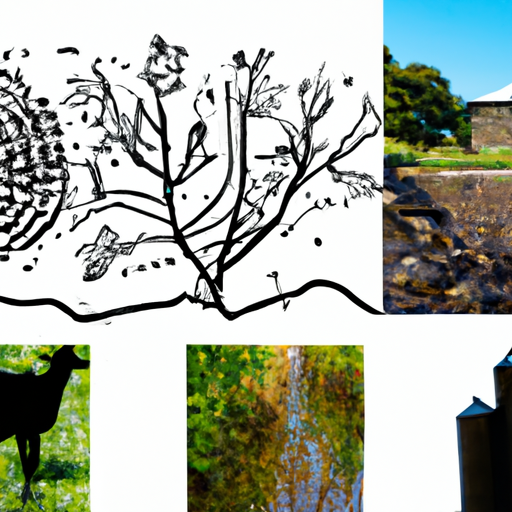 Animals, the diverse creatures that inhabit our planet, have a profound impact on the environment in which they live. From the microscopic organisms that exist in every drop of water to the majestic mammals that roam vast landscapes, animals play a crucial role in shaping ecosystems and maintaining the delicate balance of nature. This article will delve into the intricate web of interactions between animals and their environment, exploring their influence on various ecological processes and the importance of conservation efforts to ensure their survival.
Animals, the diverse creatures that inhabit our planet, have a profound impact on the environment in which they live. From the microscopic organisms that exist in every drop of water to the majestic mammals that roam vast landscapes, animals play a crucial role in shaping ecosystems and maintaining the delicate balance of nature. This article will delve into the intricate web of interactions between animals and their environment, exploring their influence on various ecological processes and the importance of conservation efforts to ensure their survival.
One of the fundamental ways in which animals affect the environment is through their feeding habits. Herbivores, such as deer, elephants, and rabbits, consume vegetation, which directly influences the plant populations in an ecosystem. By selectively browsing on certain plants, they can alter the composition and structure of plant communities, affecting the availability of food and habitat for other organisms. In turn, this can impact the abundance and diversity of other animal species that rely on these plants for sustenance or shelter.
Carnivores, on the other hand, play a crucial role in maintaining the balance of predator-prey relationships. Their presence controls the population sizes of herbivores, preventing overgrazing and maintaining the health of plant communities. Predators also influence the behavior and distribution of prey species, forcing them to adapt and evolve in response to predation pressure. This dynamic interaction between predators and prey, known as the “trophic cascade,” has far-reaching effects on the overall structure and functioning of ecosystems.
Animals also contribute to nutrient cycling and ecosystem productivity. Through their excretions and decomposed remains, they release essential nutrients, such as nitrogen and phosphorus, back into the environment. These nutrients are then taken up by plants and utilized for growth, ultimately supporting the entire food chain. In aquatic ecosystems, fish and other marine organisms play a vital role in nutrient cycling by migrating from deep waters to shallow areas, transporting nutrients and enriching the surrounding environment.
Furthermore, animals can shape landscapes through their burrowing and nesting behaviors. Beavers, for instance, construct dams that create wetlands, providing habitat for numerous plant and animal species. Burrowing animals, like prairie dogs, aerate the soil and promote water infiltration, benefiting plant growth and preventing erosion. Birds, with their intricate nest-building activities, can contribute to seed dispersal and facilitate forest regeneration.
Moreover, animals act as pollinators, ensuring the reproduction of many plant species. Bees, butterflies, bats, and birds are among the most well-known pollinators, transferring pollen from male to female flower parts as they feed on nectar. This process facilitates fertilization and the production of fruits and seeds, which are vital for the survival and dispersal of numerous plant species. Without these pollinators, entire ecosystems would suffer, leading to a decline in plant biodiversity and impacting the availability of food resources for other animals.
Unfortunately, human activities have significantly impacted animal populations and, consequently, the environment. Habitat destruction due to deforestation, urbanization, and agricultural expansion has resulted in the loss of crucial habitats for countless species. Pollution, climate change, and the introduction of invasive species have further exacerbated the situation. The decline or extinction of certain animal species can disrupt entire ecosystems, leading to imbalances in ecological processes and reduced resilience to environmental changes.
Recognizing the importance of animals for the environment, conservation efforts have become paramount. Protecting and restoring habitats, implementing sustainable land-use practices, and reducing pollution are crucial steps in preserving animal populations and safeguarding the delicate ecological balance. Moreover, educating people about the importance of biodiversity and promoting responsible tourism can contribute to the conservation of animals and their habitats.
In conclusion, animals have a profound influence on the environment, shaping ecosystems through their feeding habits, predator-prey relationships, nutrient cycling, and pollination activities. Their presence or absence can have far-reaching effects on the abundance, diversity, and functioning of ecosystems. However, human activities pose significant threats to animal populations and their habitats, necessitating urgent conservation actions. It is our collective responsibility to protect and preserve the remarkable diversity of animal life on our planet, ensuring a sustainable future for both animals and the environment they inhabit.
